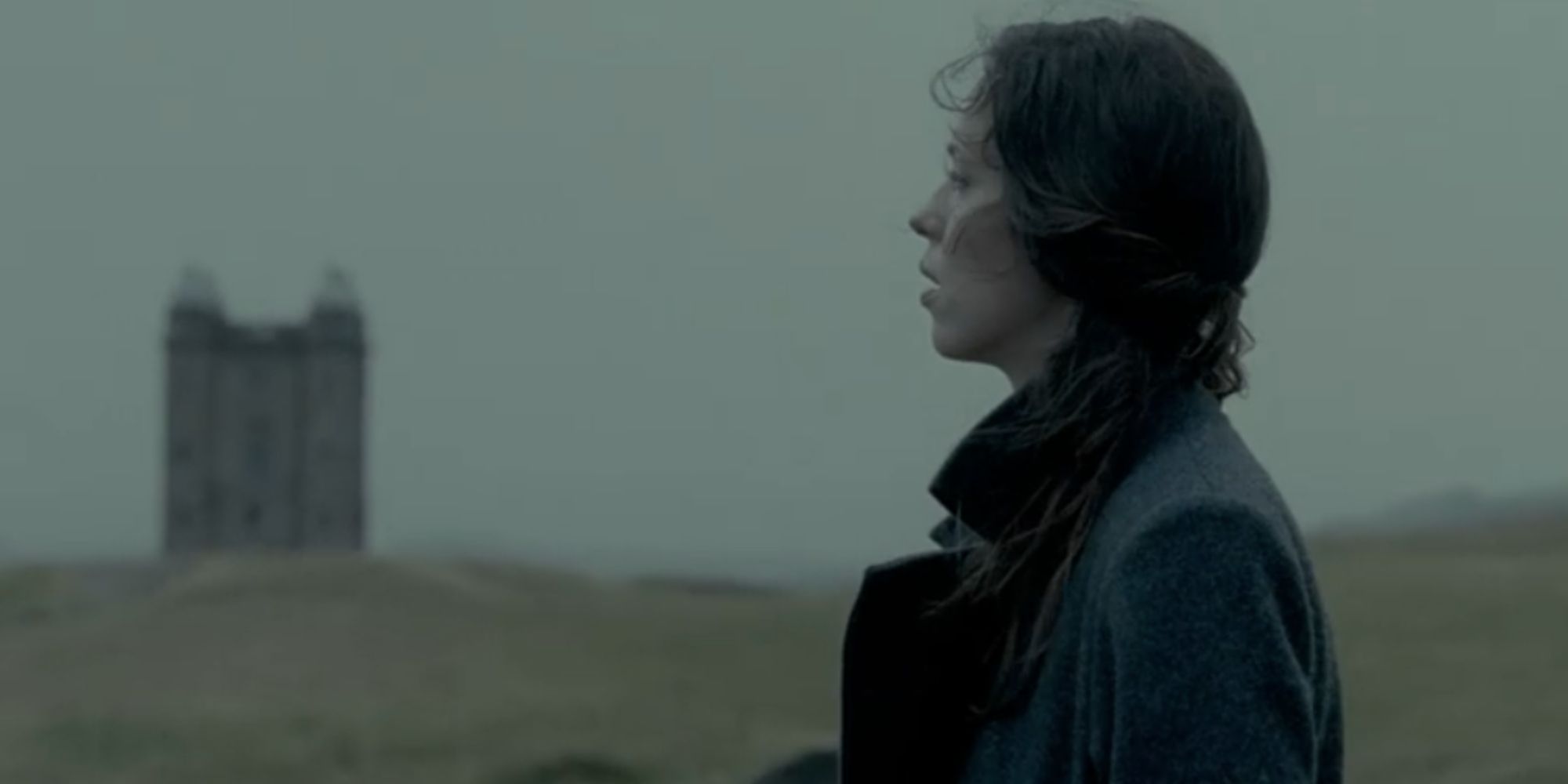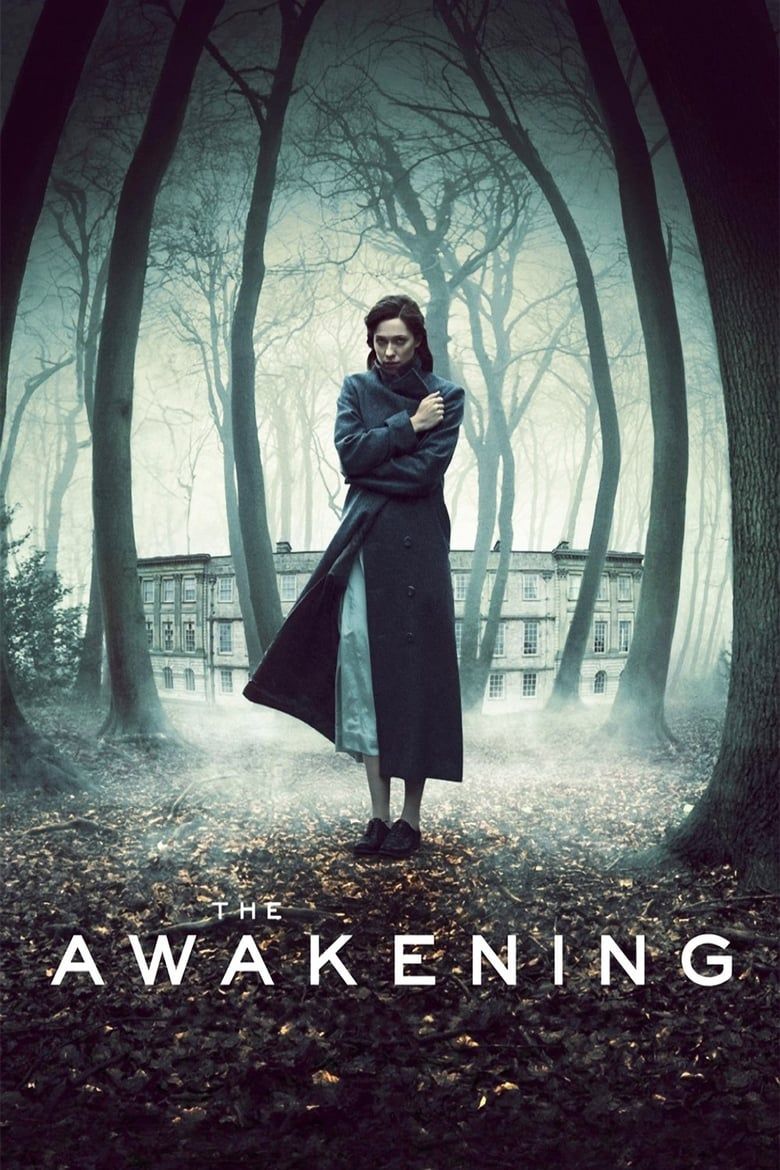
With every new movie, the horror genre evolves and pushes boundaries. Terrifying monsters, nightmare-inducing apocalypses, and realistic body horror populate the big screen. As the genre continues to change shape, sometimes it can be refreshing to go back to the basics with a good old-fashioned ghost story. Nick Murphy’s debut 2011 film, The Awakening, does just that. Starring Rebecca Hall as Florence Cathcart in the wake of The Great War, The Awakening reveals everything that makes a classic gothic tale great. The slow-burn drama and the grimdark aesthetic make the experience of watching The Awakening identical to reading a short story starting with, “It was a dark and stormy night…”
How ‘The Awakening’ Uses Drama and Suspense to Creep Out Instead of Scare
Without gore or Big Bad ghosts that jump-scare and terrorize, The Awakening must frighten its audience through suspense. Following Florence Cathcart as a ghost hunter, or rather a ghost de-bunker, the film spends a good deal of time demonstrating the mechanics of how ghost hoaxes used to work. The opening scene plays with the dichotomy of being a ghost movie, while also having a lead character who is dedicated to proving ghosts aren’t real. A raven is offered as a blood sacrifice by a medium dressed in a black lace veil, lulling the audience with an over-the-top Victorian seance until Florence gleefully explains how everything the viewer just saw was a set-up. Once the audience has been introduced to how Florence works, a history teacher from a boys’ boarding school arrives to beg for her help. There are rumors of a ghost, and it has scared a schoolboy to death. Florence needs to go and work her magic to assure the boys there is nothing to fear, but once she arrives at the boarding school, Florence’s mysterious past begins to catch up to her.
Related
The 10 Best Period Ghost Story Movies, Ranked
“Do you think the dead come back and watch the living?”
The Awakening is more interested in creeping its audience out than scaring them. The Awakening frequently includes “spy shots.” Characters will be filmed from around a corner, or from below or behind an object on set, to give the sense of eavesdropping. In doing so, the audience feels complicit with the malicious forces at work. This spying lends to the mystery aspect of The Awakening. The film neatly divides itself into two halves, rather than a screenplay’s traditional three-act structure. The through-line for these two halves is the centering of a mystery plot, with the first half of the film devoted to creating a pressure cooker of tension surrounding Florence’s investigation into the school’s possible ghost. All this build-up pays off in the second half of the film, where Florence herself is under the microscope. Ghosts have long been allegorical for trauma and bad memories. This is especially the case for Florence and The Awakening. Being at the boarding school negatively affects Florence’s ability to think, and soon she is spiraling. Her declining mental state creates psychological tension, with the audience always guessing if there really is a ghost around the corner or not, as Florence herself begins to suspect a paranormal explanation for all the strange happenings.
The Vibes of ‘The Awakening’ Are Pitch-Perfect For an Old-Timey Ghost Movie
Another tool in The Awakening’s arsenal for unnerving the audience is the atmosphere and aesthetic. Watching the first scene of The Awakening, one would be forgiven for thinking it was a black-and-white movie. It’s not until the first blood is spilled that there’s any real burst of color. Everything is graded to invoke an audience’s impression of the 1920s, with heavy reliance on blues and grays, all the warm yellows graded out in post-production. The Awakening clearly loves its period setting. Florence’s ghost-hunting equipment is given special attention, with the camera flourishing each item for a glamor shot. The boarding school is an inspired backdrop for the film. Located in the countryside, there are several lingering shots of the school with heavy fog rolling over it. Children have long been horror staples, and The Awakening features many prepubescent schoolboys running around with their giggles echoing in a pointedly eerie fashion. All these elements create a very specific, ghostly vibe for the film.
This moody tone is essential to The Awakening‘s horror. The strong ambiance through the visual language allows The Awakening to establish a suspense-based horror. The horror is subtle and lingering, with Florence privately unraveling. Having an eerie atmosphere matches the story perfectly.
Modern horror found its foothold with ghost stories. The Awakening is an homage to these humble origins, with the lead character Florence turning her nose up at the possibility of ghosts. Her ultra-scientific reasoning clashes with the whimsy of the supernatural that every other character seems to believe in. The carefully cultivated aesthetic of the film works in tandem with the slow-burn tension of the story and its many turns. The Awakening is a fine-tuned ghost story, perfect for when one wants a throwback without watching a black-and-white picture.
The Awakening is available for streaming on Prime.
Watch on Prime








